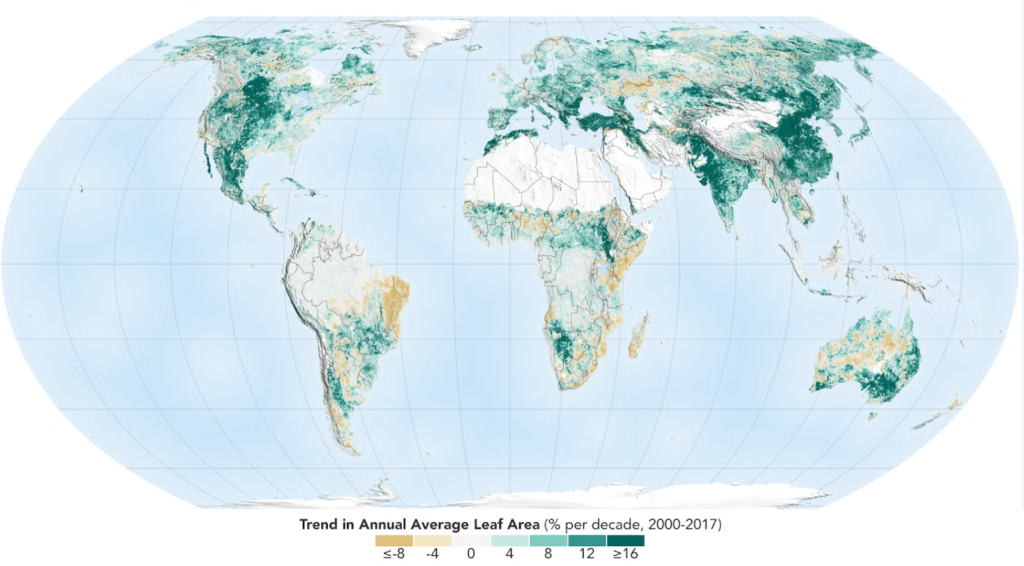Updated May 2024 –
June 6, 2023 – After nearly two decades of recording data, NASA has confirmed what it began to suspect in the 90’s; the world really is becoming a greener place and two unlikely countries are leading the charge.
A new study, published February 11 in Nature Sustainability, helps explain why. One main driver is the “fertilization effect,” brought about by humans burning fossil fuels. As CO2 increases in the atmosphere, this boosts photosynthesis—as long as water, light, and nutrients are not limited. When plants take up more of the gas, they produce more food and unfurl new leaves.
For nearly 20 years NASA has been monitoring the Earth’s foliage using two satellites and the high-resolution data has revealed changes in the world’s vegetation in impressive detail, taking four images every day of every area of the planet.
Overall, the planet is 5% greener than it was in the early 2000s. This is the equivalent of the Amazon rainforest in extra leaf cover from plants and trees. But researchers also found another cause for the change in hue: planting more crops and trees. China and India, the two most populous countries on Earth, have contributed about a third of the greening seen since 2000, mainly in the form of forests and farms.

They also discovered something that surprised them; India and China accounted for one-third of the greening, despite having only 9% of the world’s green areas. Both countries have embarked on an extensive reforestation program and, over the period of research, China’s foliage grew more than 10% while India’s increased by more than 6%. The global average was 2.3%.
An international team of scientists has studied 33 years of satellite data and found that Earth is actually getting significantly greener as a result of rising carbon dioxide levels, with greater carbon emissions over the past three decades leading to a huge increase in the amount of leaves on plants and trees.
“We were able to tie the greening largely to the fertilizing effect of rising atmospheric CO2 concentration by tasking several computer models to mimic plant growth observed in the satellite data,” said researcher Ranga Myneni from Boston University.
The process, called the carbon fertilisation effect, results from leaves absorbing CO2 from the air as part of photosynthesis. With greater levels of carbon in the atmosphere, plants and trees and even crops actually grow faster, particularly in warm climates.
And with the levels of carbon in the atmosphere as high as they are now, that’s seen a massive increase in the amount of vegetation over the surface of the planet.









Pingback: Canada, USA and Global Co2 emissions are completely absorbed by plant life, here are the numbers - ROUTE 66 POST